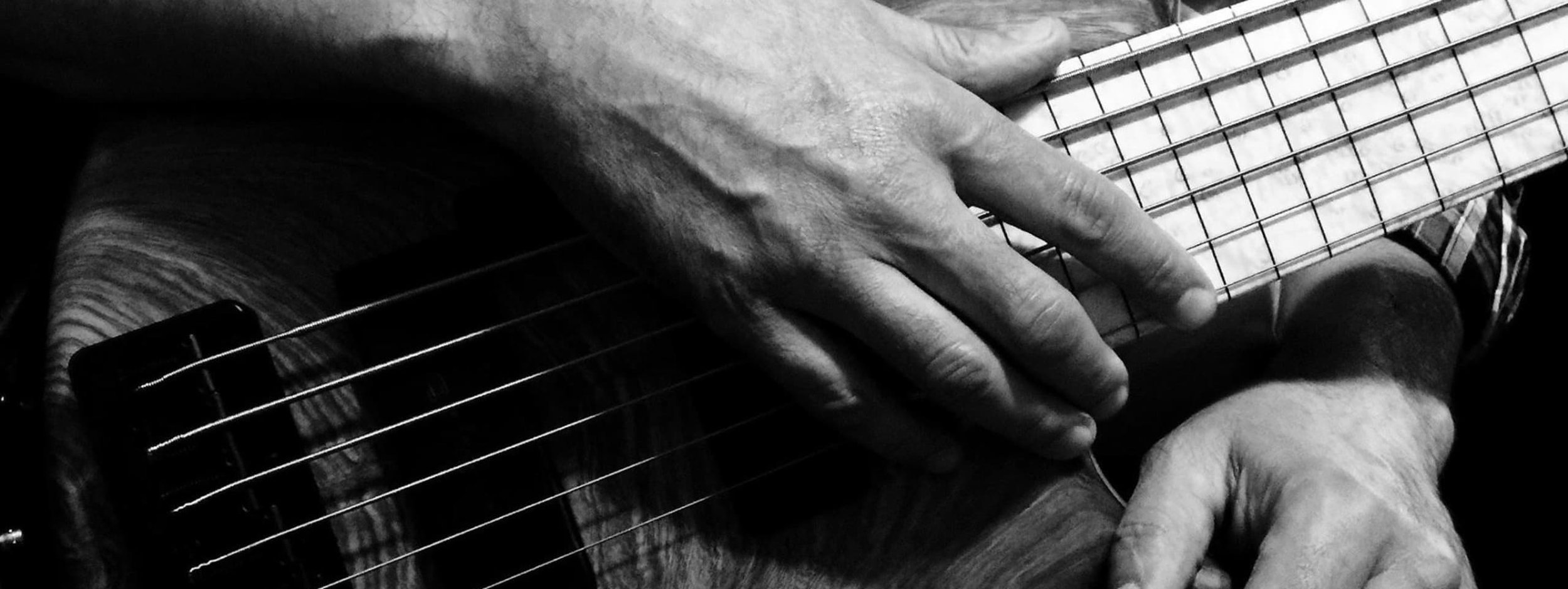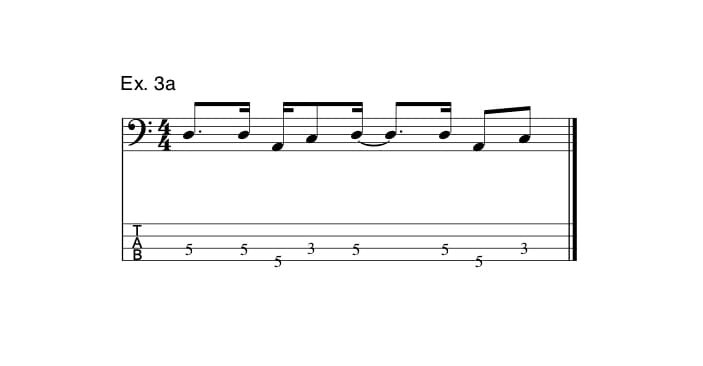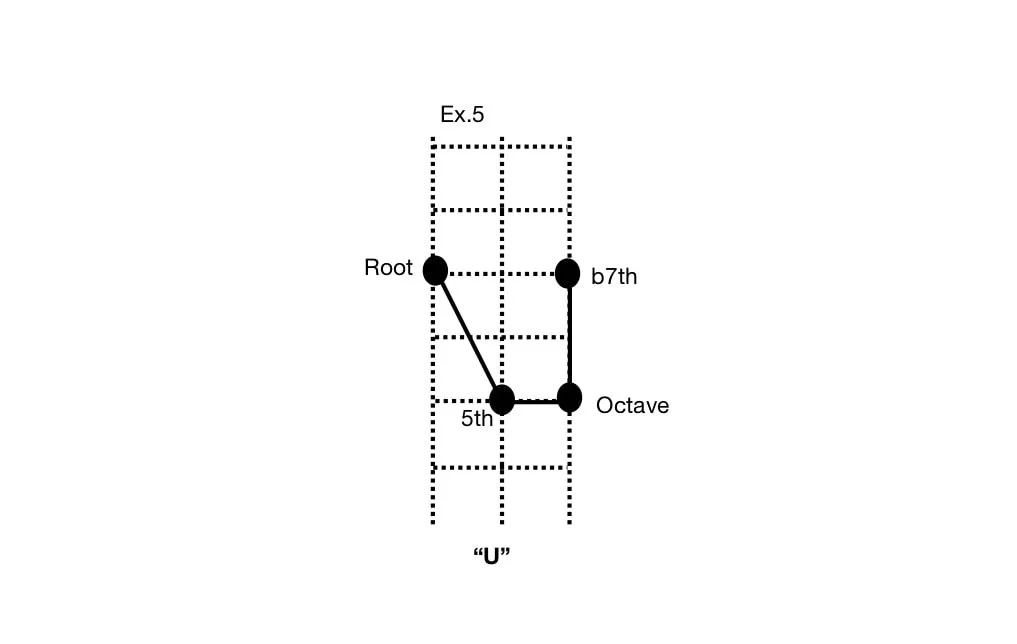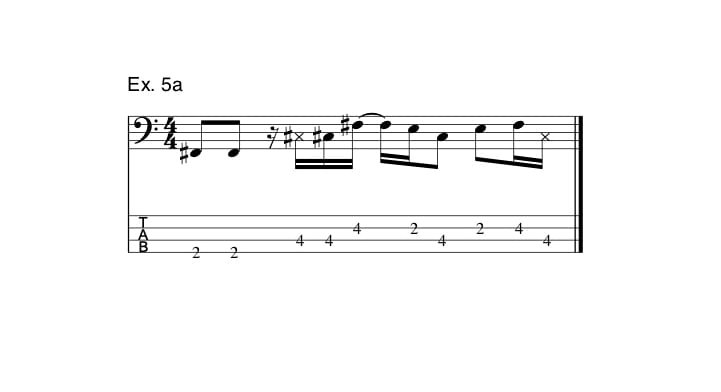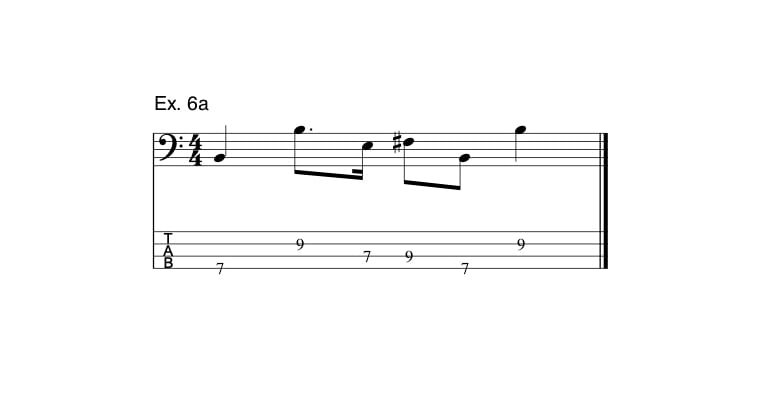Beginner Bass Base – Building Blocks Of A Groove: The Harmonic Groove Shape (Part 4 of 4)
MASTER BASS EDUCATOR PATRICK PFEIFFER HELPS BUILD EVERY ELEMENT OF YOUR PLAYING WITH HIS BEGINNER BASS BASE COLUMN
By Patrick Pfeiffer
Originally posted in Bass Magazine, December 2021
Let’s play, connect the dots! It’s not “Let’s play connect the dots,” but truly, “Let’s play commaconnect the dots!” In this final installment of Elements of a Groove, I’m presenting you with a way to connect the dots … quite literally. Think of the notes of a groove as your “dots,” and then think of the shapes those notes would form on your fingerboard if you connected them with an imaginary line. The shapes enable you to see all the notes available to you to form a great groove, without having to line them up in any particular sequence. The harmonic shape of a groove is about being able to see, all at once, where your best notes for the groove are in relation to the root, and having your fingers hover above them ready to pounce at your bidding. It’s not so much about the sequence of the notes, but rather the geometric shape of the pattern the notes form on your fingerboard.
You only need three to five different notes to create a solid or even spectacular bass groove — enough notes to provide interesting combinations, but not too many to lose track of the groove. Having a small number of different notes makes it easier to play with rhythmic variations, which can make a simple harmonic structure sound much more complex than it really is. Listen to James Jamerson’s bass part on Gladys Knight’s “I Heard It Through the Grapevine” (when the vocals come in), and compare it to Marshall Grant’s bass line on Johnny Cash’s “Folsom Prison Blues” and Teddy Smith’s bass part on Horace Silver’s “Song for My Father.” Three extremely different grooves, and yet all of them achieve very different results using only the root and the 5th of the chord.
Memorizing the shapes of the most common harmonic groove patterns gives you templates for some of the tastiest and most versatile grooves you can imagine. They are:
• The “L” pattern
• The “V” pattern
• The “Reversed L” pattern
• The “U” pattern
• The “Z” pattern
• And finally, the “Flag” pattern
The “L” pattern
The most versatile harmonic groove shape is the “L” pattern. It looks like the letter L with the long upright stem tilting back (see Ex. 1).
It uses three notes: the root, the 5th and the octave (which is the root again, but an octave apart). This shape can outline any major, minor, or dominant chord and is heavily utilized in countless Motown songs, among many others. Example 1a is from Bob Babbitt’s bass part in Marvin Gaye’s hit “Mercy Mercy Me.”
The “V” pattern
Another harmonic groove shape that uses three notes is the “V” pattern. It looks like the letter V with one side tilted and the other going straight up (Ex. 2), connecting the root, its octave, and the b7th of a chord. Listen to Alan Gorrie’s bass part on “Pick Up the Pieces” by the Average White Band (Ex. 2a), and check out how this simple structure anchors the song and makes for a very memorable groove. This shape fits over any minor or dominant chord.
Both the “L” and “V” shapes use only two different notes in the scale: the root in two octaves (which have the same note name) and either the 5th (“L”) or the b7th (“V”).
The “Reversed L” pattern
The final three-note pattern is the “Reversed L” shape, which looks like the mirror image of an L (see Ex. 3). It comes in two versions. The first version connects the root with the 5th and the b7th. James Jamerson’s part in The Temptations’ “Cloud Nine” is a perfect example (Ex. 3a).
If you elongate the upright stem of the “Reversed L” (Ex. 4), you get the second version, connecting the root with the 6th, in addition to the 5th.
he "Elongated Reverse L" Pattern
Jaco’s bass part for Weather Report’s “Black Market” proves the grooveability of this shape (Ex. 4a), which can be used over minor, dominant, or even major chords.
The “U” pattern
Adding a fourth note gives us two additional commonly used harmonic groove shapes. The “U” with a flattened bottom (take a look at Ex. 5) is a combination of the “L” and the “Reversed L” shapes, and it consists of the root and its octave, as well as the 5th and b7. Willie Weeks’ part on Donny Hathaway’s live version of “Little Ghetto Boy” is one of many such examples (Ex. 5a).
The “Z” pattern
The other four-note harmonic groove shape is the “Z,” which unsurprisingly looks like the letter Z, albeit with an upright middle beam (Ex. 6); it is proudly represented by John Entwistle’s groove on The Who’s “Pinball Wizard.” The four notes are the root and its octave, as well as the chord’s 4th and 5th (Ex. 6a).
The “Flag” pattern
Finally, the five-note harmonic groove shape is the “Flag,” which looks like a flag hanging from someone’s front porch (Ex. 7). It is the ultimate go-to structure if you’re looking for a fancier-sounding groove that seems to weave effortlessly through the music, like Tiran Porter’s bass line on The Doobie Brothers’ “Long Train Running” (Ex. 7a).
Remember, in all of these harmonic groove shape examples, you can change around the order of the notes and come up with a bunch of fresh-sounding grooves. It’s a good idea to start your grooves on the root; then go ahead and experiment with different sequences, staying in the same harmonic groove shape but changing the sequence of the notes and the rhythm.
You can even add notes along the lines of the original groove shape, as in Tommy Cogbill’s bass part for Aretha Franklin’s “Chain of Fools” (Ex. 8a) and Carol Kaye’s part on Lou Rawls’ “A Natural Man” (Ex. 9a). Both bass grooves use the “Reversed L” shape, and yet each sounds unique.
Enjoy getting into (harmonic) shape with this concept, and as always, all the very bass to all of you!
